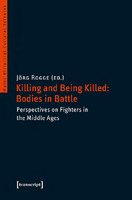Killing and Being Killed
Bodies in Battle -- Perspectives on Fighters in the Middle Ages
Contributor(s)
Rogge, Jörg (editor)
Collection
Swiss National Science Foundation (SNF)Language
EnglishAbstract
What bodily experiences did fighters make through their lifetime and especially in violent conflicts? How were the bodies of fighters trained, nourished, and prepared for combat? How did they respond to wounds, torture and the ubiquitous risk of death? The articles present examples of body techniques of fighters and their perception throughout the Middle Ages. The geographical scope ranges from the Anglo-Scottish borderlands over Central Europe up to the Mediterranean World. This larger framework enables the reader to trace the similarities and differences of the cultural practice of "Killing and Being Killed" in various contexts. Contributions by Iain MacInnes, Alastair J. Macdonald, Bogdan-Petru Maleon, and others.
Keywords
fight; violence; early modern history; medieval history; history; conflict; cultural history; european history; body; middle ages; Non-combatantDOI
10.14361/9783839437834ISBN
9783837637830OCN
1023979203Publisher
transcript VerlagPublisher website
https://www.transcript-verlag.de/Publication date and place
Bielefeld, 2018Series
Mainzer Historische Kulturwissenschaften, 38Classification
History and Archaeology
CE period up to c 1500


 Download
Download Web Shop
Web Shop